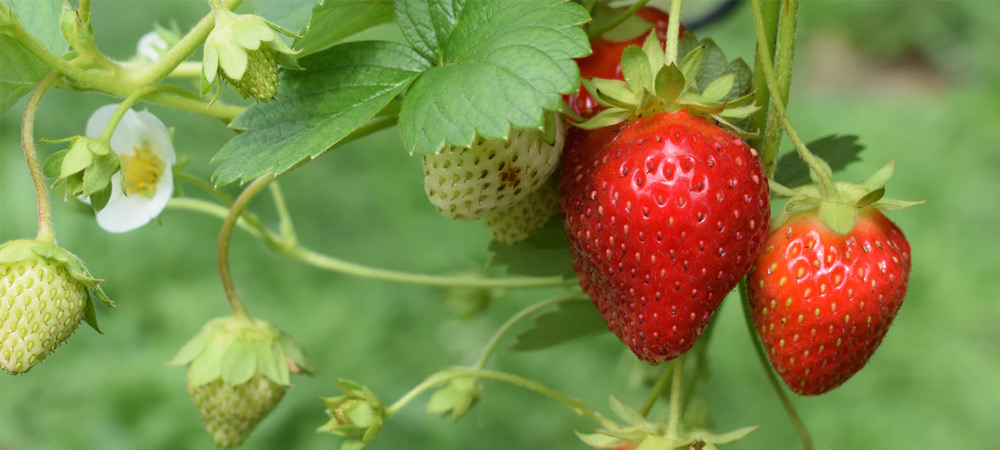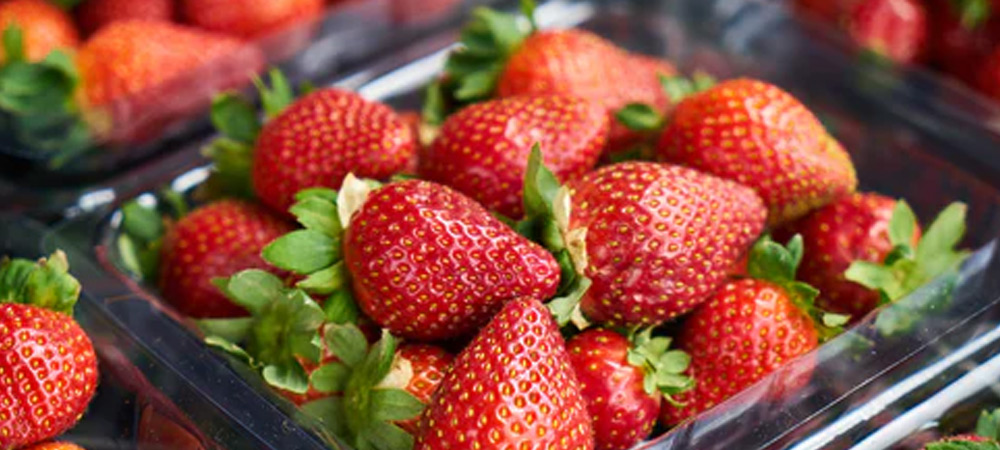How To Grow Strawberries in a Greenhouse

Strawberries are without a doubt one of the most popular products to come out of home gardens and allotments. The ripe red fruit evokes images of summer fun of many kinds, from a summer picnic in the garden to a posh snack at Wimbledon or Ascot.
You can grow them outdoors of course, but have you ever considered the advantages of growing them in your greenhouse?
Growing Strawberries in a Greenhouse
Your greenhouse will protect your strawberries from sudden frosts and dangerously cold temperatures, which is one of the best advantages. Pre-flowering strawberry plants should be kept above 15°C, and they should get as much sunlight as you can give them during the fruiting period. Keeping the windows clean is a great benefit too, as it prevents valuable solar energy from being blocked by the dirt and grime that collects on the glass.
Your greenhouse will also protect your strawberry plants from many of the pests that might otherwise do substantial damage to the plant or the yield. It’s worth noting that the glass also keeps out helpful insects too, like bumblebees needed to pollenate the plants. Bringing in a few bees when you can, will help the plants – and the bees – to be happy and healthy.

When & Where
Spring and autumn are the best times for planting strawberries. A sunny, sheltered spot is best, in a free-draining soil rich with nutrients. Organic matter like compost and well-rotted manure can be worked into the soil prior to planting, to prepare it for the nutritional needs of the plants.
If you don’t have the ideal spot for growing strawberries, consider alpine (or other) varieties that are more able to deal with less sunlight.
Strawberry plants like lots of space. Planting them around 45cm apart will give sufficient soil to each plant. This allows them their fair share of nutrients, minerals and moisture.
For planting runners, spread the roots in the hole and rest the crown of the plant at about surface level – not above the soil though, or it may wither and dry up. If you find your strawberry runners are rotting, then you are planting them too deep.
Once they are in place, firm up the soil around them and give them a good initial watering.

Light, Watering & Extra Tips
Strawberries love lots of sunshine, dry conditions, and some shelter. Greenhouses are excellent for providing these.
Strawberries to need frequent watering, especially in the hotter months, or the roots may dry out and the plant will be stunted or die – you definitely won’t be seeing the bumper crop you were hoping for. Be careful not to overwater though, as they do like things hot and dry near the surface – waterlogging will cause rot in the root and even the fruit can rot from over-watering.
Fortnightly fertilising is of great benefit, using a balanced fertiliser at first, and then switching to a potash liquid fertiliser once flowering begins. This will assist in the formation of fruits. Strawberries are a member of the rose family, so rose fertiliser is a pretty effective choice if you’re unsure about mixing your own.
Unless you can coax some bees into your greenhouse without also inviting unwanted pests, you will probably want to hand pollinate. With a soft brush (makeup brushes or soft paint brushes work well), gently brush a flower to get some pollen on the bristles, then change to another flower and do the same. Go from flower to flower, back and forth between several of them, and you should be successful. Check frequently for successful pollination and repeat if no results occur on a given flower or plant.
You will know it is time to harvest when the fruit is in full colour. Pick them as soon as possible to avoid them rotting on the vine – and because you won’t be the only local eyeing them as they approach ripeness… another reason why the protection of a greenhouse is a good thing! Besides, they taste best when first ripe, and as soon after picking as possible.
If you want to overwinter your plants, keep them in a cool greenhouse or outside through the cold months, in order to trigger the plant to produce its next crop.
Pests & Diseases
Greenhouse strawberries have fewer pests to deal with, but they do have some specific problems of their own.
Keep an eye out for strawberry black eye. This occurs if frost gets to your plant, and the central part of the stem will blacken, and no fruit will set.
Grey mould is another thing to watch for. Good ventilation and sufficient spacing between plants mitigates the risk of this condition.
Red steel rot, which shows itself through stunted leaves and red discolouration of the root, can occur if the soil is not adequately draining.
Powdery mildew is a white deposit on the surface of the leaves and will cause them to shrivel and shrink. Keeping the soil moist and lowering the temperature a little should take care of it.
Vine weevils, once they’ve reached their adult stage, will eat notches into the edges of leaves. The larval stage is even worse though, as these plump, white, brown-headed beasties will feed on the roots and cause damage beneath the surface. Biological control is really the only way to stop this.
Should you rotate strawberry crops?
Strawberry plants should be kept no longer than three seasons, or they lose their vigour and harvests will decrease more each year. Infestations and diseases are also more likely in a plant older than three years. For the same reason, it is also a good idea to change the location of your strawberry patch each time you plant new ones, if at all possible. Otherwise, you may be moving new plants into a place where dangerous conditions are already established.
Give them the best chance you can – new plants every three years, and in a new spot of ground each time.
If you don't have a greenhouse yet, then browse the range online at South West Greenhouses today.
 Author:
Author: